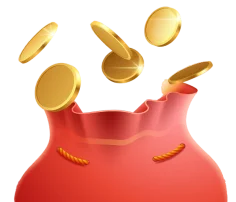Embark on a journey of knowledge! Take the quiz and earn valuable credits.
Take A QuizChallenge yourself and boost your learning! Start the quiz now to earn credits.
Take A QuizUnlock your potential! Begin the quiz, answer questions, and accumulate credits along the way.
Take A QuizPlease allow ads on our site
LoginFN meaning in Maths ?
Maths Miscellaneous in Maths 11 months ago
In mathematics, the Fibonacci numbers, commonly denoted Fn, form a sequence, called the Fibonacci sequence, such that each number is the sum of the two preceding ones, starting from 0 and 1. That is,
andfor n > 1.The sequence starts:
0, 1, 1, 2, 3, 5, 8, 13, 21, 34, 55, 89, 144, ...Under some older definitions, the value F 0 = 0 {\displaystyle F_{0}=0} is omitted, so that the sequence starts with F 1 = F 2 = 1 , {\displaystyle F_{1}=F_{2}=1,} and the recurrence F n = F n − 1 + F n − 2 {\displaystyle F_{n}=F_{n-1}+F_{n-2}} is valid for n > 2. In his original definition, Fibonacci started the sequence with F 1 = 1 , F 2 = 2 {\displaystyle F_{1}=1,F_{2}=2}
Fibonacci numbers are strongly related to the golden ratio: Binet's formula expresses the nth Fibonacci number in terms of n and the golden ratio, and implies that the ratio of two consecutive Fibonacci numbers tends to the golden ratio as n increases.
Fibonacci numbers are named after the Italian mathematician Leonardo of Pisa, later known as Fibonacci. In his 1202 book Liber Abaci, Fibonacci introduced the sequence to Western European mathematics, although the sequence had been described earlier in Indian mathematics, as early as 200 BC in work by Pingala on enumerating possible patterns of Sanskrit poetry formed from syllables of two lengths.
Fibonacci numbers appear unexpectedly often in mathematics, so much so that there is an entire journal dedicated to their study, the Fibonacci Quarterly. Applications of Fibonacci numbers include computer algorithms such as the Fibonacci search technique and the Fibonacci heap data structure, and graphs called Fibonacci cubes used for interconnecting parallel and distributed systems.
They also appear in biological settings, such as branching in trees, the arrangement of leaves on a stem, the fruit sprouts of a pineapple, the flowering of an artichoke, an uncurling fern, and the arrangement of a pine cone's bracts.
Fibonacci numbers are also closely related to Lucas numbers reference
User submissions are the sole responsibility of contributors, with TuteeHUB disclaiming liability for accuracy, copyrights, or consequences of use; content is for informational purposes only and not professional advice.
Take Quiz To Earn Credits!
Turn Your Knowledge into Earnings.

No matter what stage you're at in your education or career, TuteeHub will help you reach the next level that you're aiming for. Simply,Choose a subject/topic and get started in self-paced practice sessions to improve your knowledge and scores.
Explore Other Libraries

Join Our Community Today
Ready to take your education and career to the next level? Register today and join our growing community of learners and professionals.

Your experience on this site will be improved by allowing cookies. Read Cookie Policy
Your experience on this site will be improved by allowing cookies. Read Cookie Policy